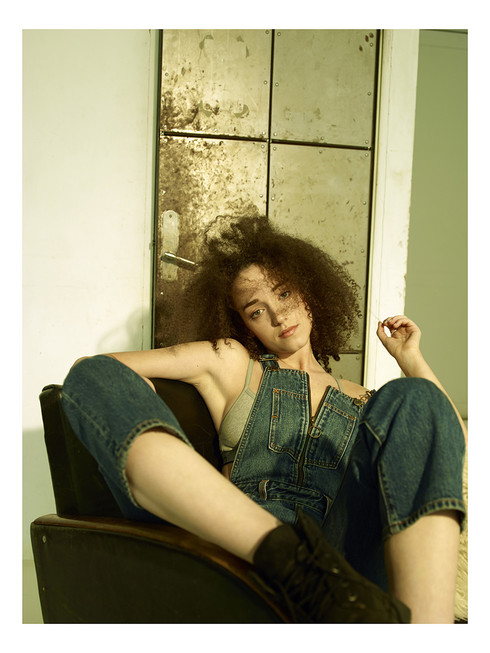Interview with Mihoko Ogaki
Written by Mari FlorerEdited by Jörgen Axelvall
Mihoko Ogaki creates a galaxy of life and death
There are a lot of emotions represented and evoked in Mihoko Ogaki´s artwork - all feelings you can imagine in a life, if you ask her.
She has just finished her exhibition: “Threshold” at Ken Nakahashi, Tokyo, and the latest installation of her “Milky Way” series.
Her art reminds us about our mortality; that death and life are one, memento mori, memento vivere.
It´s the daily life that has inspired her the most. Ogaki herself has struggled for life; she has survived cerebral bleeding. When you look at her artwork, it’s as if you understand something, but it’s hard to define what. Her installation with lights from inside an elder man’s body, it’s beautiful and terrible at the same time. She brings the observer on her own inner journey about her view of life and death.
MB: Can you tell me about your exhibition Threshold, that you have just finished.
MO: “Threshold” exhibited works from my “Milky Way” Series of three-dimensional works. Placed in a pitch-dark room, it resembles an aged man, with innumerable holes on the surface as a metaphor for the number of emotions a man embodies in a lifetime. A built-in light source illuminates the work, shining through the holes like stars, also projecting a galaxy on the surrounding ceiling and walls.
MB: What response did you get?
MO: I'm glad that many viewers took long moments to appreciate the work.
MB: Tell me about these glowing sculptures you show? Who are they?
MO: They do not resemble specific men I know, but somebody of my imagination in the form of elderly people.
MB: What feelings are involved in these models?
MO: All emotions a person feels through time, ever since he or she was born. From joy, sorrow, envy, to relief… every single emotion that there could be.
MB: Tell me a little about your background. Where did you grow up and with whom?
MO: I was born in Toyama prefecture. I attended high school in Kanazawa and college in Nagoya. Then I moved to Düsseldorf in Germany. Now I live in Ibaraki prefecture. I've met and spent time with many people in many places.
MB: You have survived cerebral bleeding. In what way has it changed you?
MO: My surgeon told my family that he had damaged a vein during a procedure and that I might become brutal, but I actually became calmer than before. My husband was surprised and said I turned gentle as a Buddhist monk. I feel positive all the time now.
MB: Why do you want to work as an artist?
MO: I had created ever since I was a child, so I have never doubted my living as an artist.
MB: You have graduated with a major in oil painting, but you use a lot of different kind of materials in your art, especially sound and light, did you change plans on the way?
MO: I do use many different techniques, in different dimensions, in videos and in performances, but all I am doing is selecting the form that suits the image I wish to create.
MB: You have studied in Aichi Prefectural University, Japan and German National Kunstakademie in Germany; where did you develop the most and why?
MO: I believe I developed the most in Kunstakademie. Given much time as a student, I thought hard and created many pieces.
MB: What cultural differences have you experienced in the art world between Asia and Europe?
MO: Food!
MB: What are you going to do this summer?
MO: I am planning to visit Germany and Italy to see Kassel Documenta, Munster Sculpture Project, and Venezia Biennale.
MB: Any favorite artist you like more than others?
MO: I like Kiki Smith, Joel-Peter Witkin and Kazuo Ohno.





















